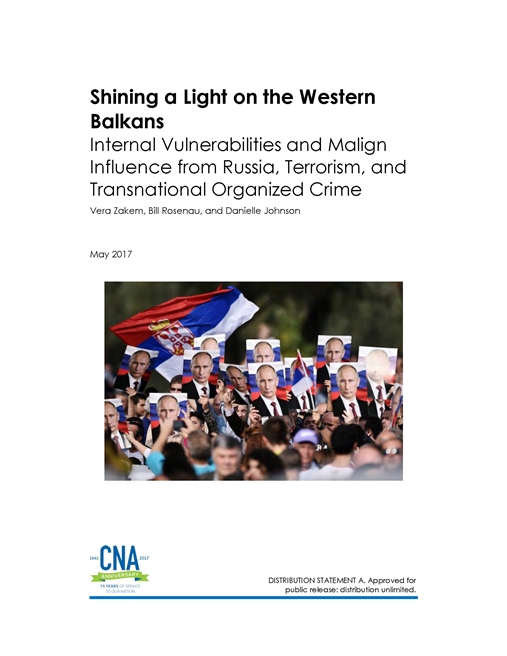The Western Balkans region, encompassing Bosnia and Herzegovina (BiH), Serbia, Macedonia, Kosovo, Montenegro, Albania, and Croatia, has been plagued by conflict and instability since the civil wars of the 1990s. Today, the Western Balkans have reemerged as a particularly unstable region, marked by internal vulnerabilities that have made the countries of this region particularly susceptible to external malign influence by state and non-state actors. The U.S. and its European partners remain committed to a peaceful Europe—one that is grounded in democratic values and upholds Western transatlantic institutions, including the European Union (EU) and the North Atlantic Treaty Organization (NATO). Yet the U.S. and its European partners have largely turned their attention away from this region during the past decade in part as a result of “Balkan fatigue.” Today, fresh concerns over a resurgent Russia, the spread of terrorist groups (particularly the Islamic State), and transnational organized crime, have caused the United States and Europe to shine a light back on the Western Balkans.
In order to inform this renewed focus on the Western Balkans, CNA initiated a study that used a qualitative methodology informed by field work in Serbia and Macedonia and extensive discussions with subject matter experts to investigate four key factors that have turned this region into a geopolitical competition for influence between the West and various adversary actors: internal vulnerabilities in Western Balkans countries; external influence from a proactive Russia; violent extremism and the flow of foreign fighters; and transnational criminal organizations that use the region as a major transit zone for people, drugs, weapons, and contraband.
Download reportDISTRIBUTION STATEMENT A. Approved for public release: distribution unlimited.
Details
- Pages: 68
- Document Number: DOP-2017-U-015223-2Rev
- Publication Date: 5/9/2017
